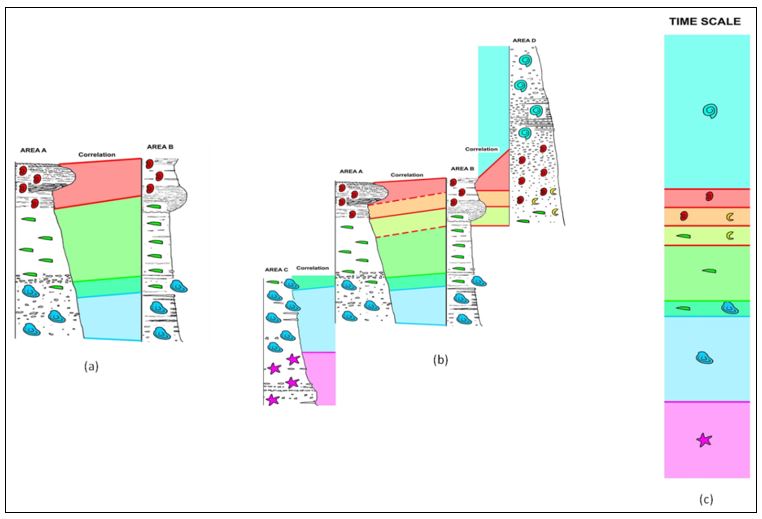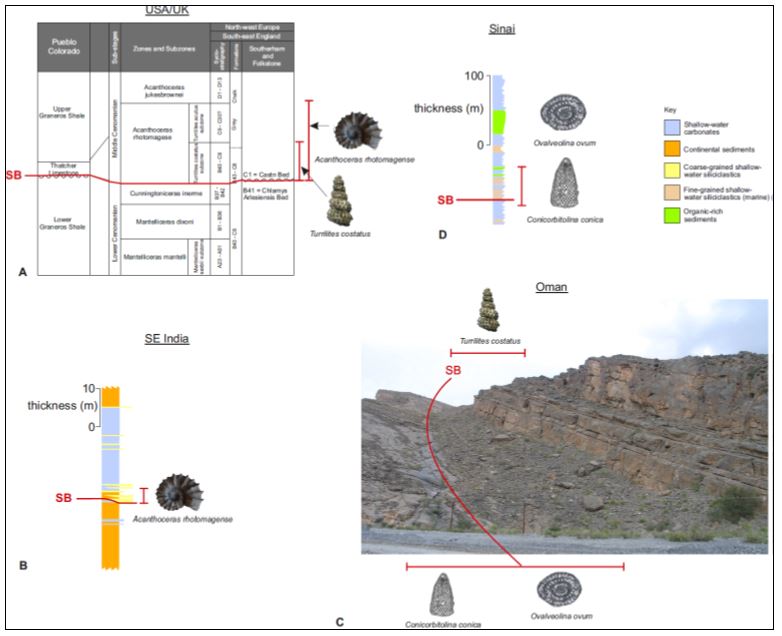Table of Contents
How Do We Use Biozones? - Correlation
Biozones are the primary tools of correlation. If the fossils used to define them have a short stratigraphic range and widespread distribution (see next section) then we can make a basic assumption:
The same fossils found in two or more separated sections are contemporaneous (evolution tells us this is so) which means the rocks they are found in are also contemporaneous.
This means we can correlate those sections using true (or very nearly true) timelines that are independent of variable features such as rock thickness and lithology (essential when dealing with sequence stratigraphy), and also we can construct relative timescales based on the order of biostratigraphic events in a basin or region.

The process of correlation. (a) identical fossils in two sections are used to define biozones (coloured bands) which can be used to correlate the two sections. (b) the addition of more sections containing the same fossils, plus some new ones, begin to build up a regional picture. © the relative positions of the various biozones and index fossils help construct a relative time scale.
Of course, there are other factors we need to be aware of which may affect the accuracy and precision of our correlation and these are discussed below. Ideally, our “index fossils” will have a widespread distribution across a number of different facies types. Certain groups of fossil organisms do indeed have this useful characteristic (see below) and these forms are the most valuable index fossils and can be used at local, regional and global scales.
At the local level, biozonation is often based on fossils organisms which have only limited, local, distribution. Such fossils are still valuable correlation tools, but their geographical applicability is limited. Nevertheless, these fossils need not simply be dismissed when considering larger scale matters. Local biozones can often be calibrated against global “standard” biozones by means of other fossil species who co-existed with both the restricted and the widespread organisms.

Local fossils and biozones based on foraminifera from sections in Oman and Sinai are calibrated to global standard zones defined by ammonites (in this case the Acanthoceras rhotomagense ammonite zone) by the co-occurrence of other ammonites. In this way, the Sequence Boundary (SB) identified in the field is shown to be contemporaneous globally and therefore eustatic in origin.
This is useful as it means that we can calibrate locally observed features such as sequence boundaries, flooding surfaces etc. as identified and defined by “local” fossils, to those same features we have seen globally defined by global fossils and therefore place local rock sections within a global stratigraphic framework.